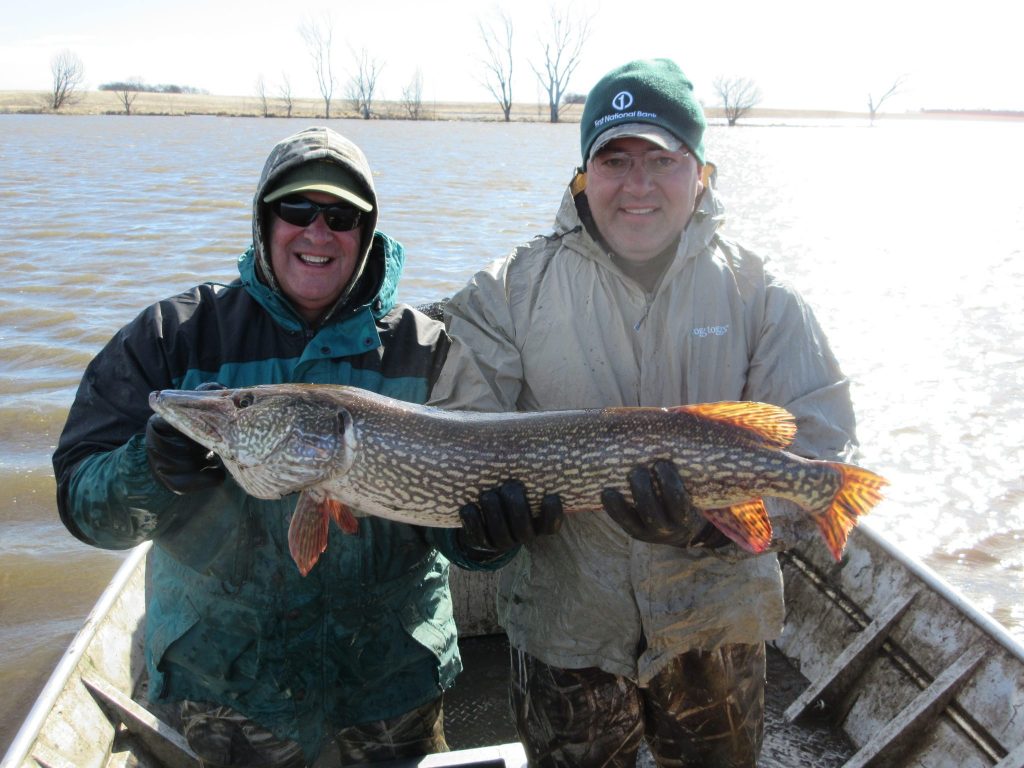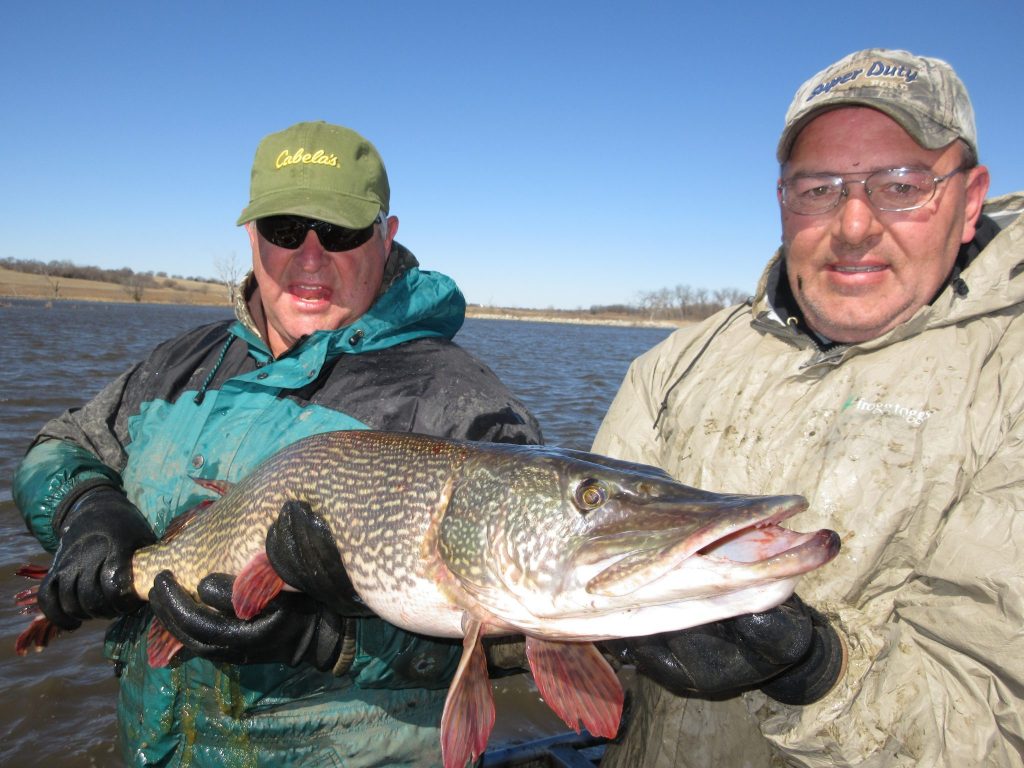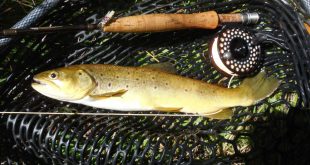Last week I teased you with a couple pictures of some pike our Game & Parks Commission fisheries biologists have had their hands on already this spring. I promised to give you some more details; let me keep that promise. . . .
This will be the sixth year we have been tagging northern pike at Lake Wanahoo. Without boring you with all of the details about that work, please go back and read these previous blog posts, if you want more details, Some Field Work, Wanahoo Pike, Piking.
Let me update that with a few photos from my time pulling pike nets this spring. Yes, I love my job and I am sure all of my fellow, pointy-headed fisheries biologists would agree. But, believe me, it ain’t all sunshine and bluebirds. When the nets are set, they have to be run regardless of weather conditions. That means some days it is really enjoyable to be on the water doing work, and well, some days ain’t so nice. In early March, with the wind howling like it has been, there have been a few of the “not-so-nice” days. All of the slime dripping off our noses did not come from the pike!
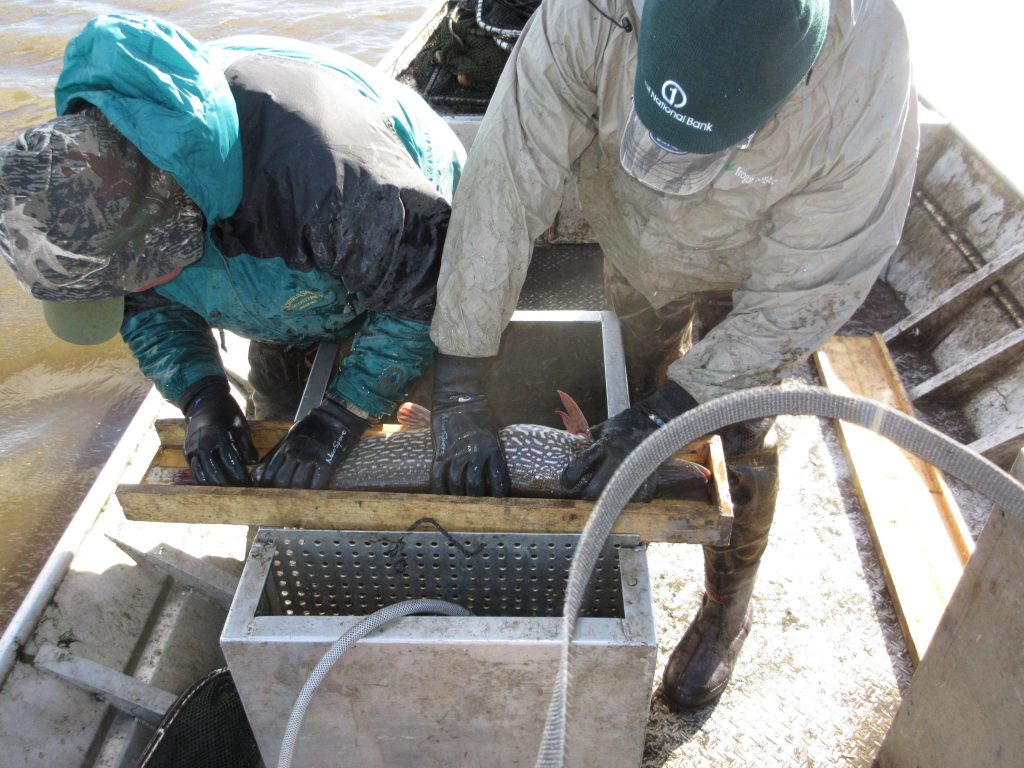
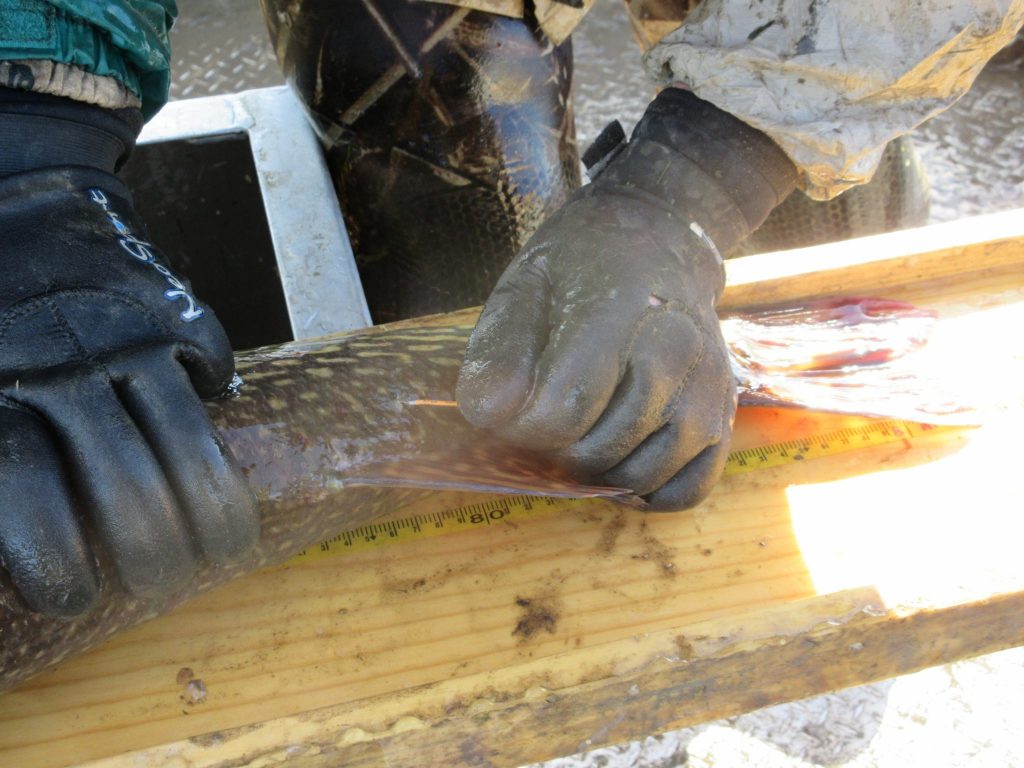
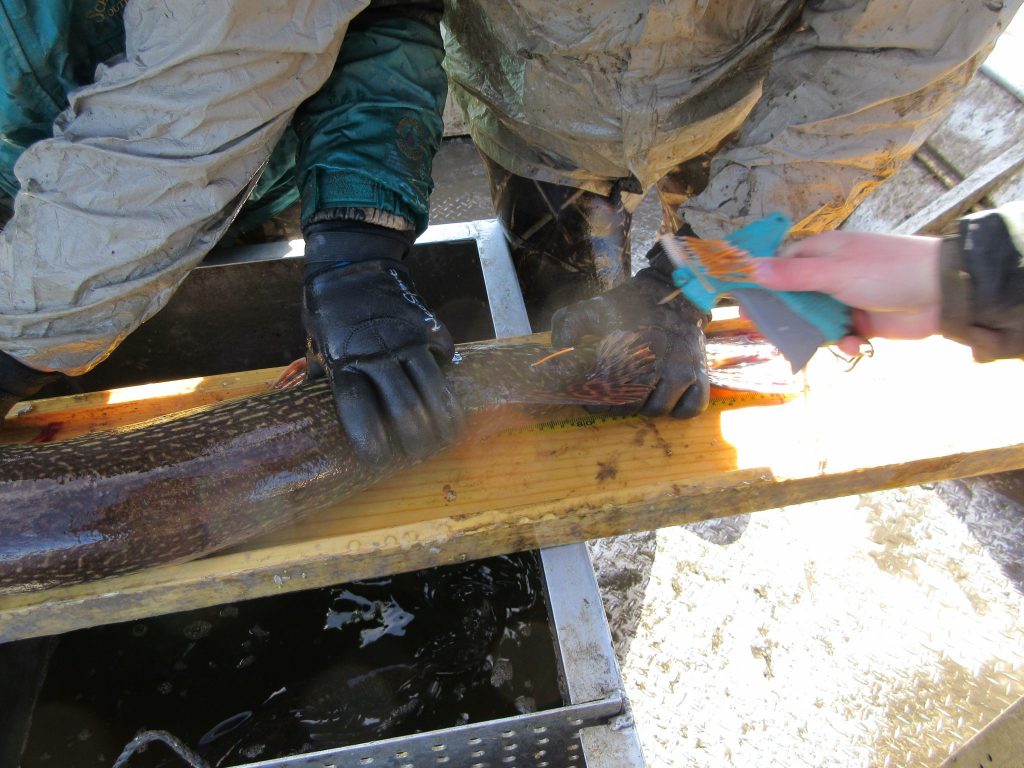
A couple of volunteers, Kurt and Wayne, helped, you can see who did all the work as I fooled around taking pictures. Here they are holding a couple of the largest specimens from yesterday. The biggest fish was a 40-incher.
I am a fisheries biologist by training, so I want to share some data with you. Before the crews started collecting Wanahoo pike this spring, we had tagged 1,761 pike in Wanahoo. Yes, right now you are less likely to catch an adult pike from Wanahoo that is not tagged, than to catch one that is tagged. With our efforts this spring, we will be approaching 1,900 pike that have been tagged in Wanahoo.
If you catch a pike at Wanahoo, look close. The tags can have algae on them and be hard to see, but they are there, on the back, just below the dorsal fin. Scrape the algae away, look close and there are tag numbers on every one of those tags. If you can read those numbers, approximate the size of the pike, release it as soon as possible, tag still in the fish, and let me know about it, daryl.bauer@nebraska.gov.
My fellow fisheries biologist Jordan Katt has been in charge of the pike-tagging project at Wanahoo. For those of you who might be interested in some pointy-headed fisheries data, Jordan worked up a summary of the pike tagging at Wanahoo thus far:
If you want to see a cleaner version of that page, 2017 Lake Wanahoo Northern Pike Study Update.
Notice the length frequency distributions on the left side of the summary: Those graphs illustrate clearly how the pike population has grown since Wanahoo opened. Most notable, notice that there are now some northern pike in Wanahoo pushing to 40 inches (1000+ mm) and more! Those are very respectable pike, anywhere, and a testament to what can be achieved with catch and release regulations.
You can also see growth rates determined from the recapturing of tagged fish (graph on the right side of the summary page). Again, the total lengths of those fish and growth increments are displayed in metric units. Notice the female pike did grow faster than males and the biggest fish in the population were still growing about an inch per year.
Lastly, the table on the bottom right shows population estimate numbers. Tagging and re-capturing tagged fish allows us to calculate estimates of the actual numbers of fish in a population. Lake Wanahoo has right around 2,100 adult pike in it; that works out to just a little over 3/acre. Pike are large, top-of-the-food-chain, apex predators, and that number shows just how limited that population really is–only 3 fish per acre is not a lot. Imagine in an acre of water that you might be fishing at Wanahoo, there may be only, on average, 3 adult pike swimming in that acre of water. As anglers, we all know that certain spots tend to concentrate and attract fish, so on any given day, there are a lot of acres of water on Wanahoo that will have less, maybe a lot less, than 3 adult pike swimming around.
The last comment I will make is definitely a pointy-headed one, but that last table of population estimates also shows confidence intervals for those estimates. There are a lot of statistics and calculations in those numbers, but let me say that it is rare to see confidence intervals so narrow for any population estimate of fish in a natural habitat. The reason those intervals, that data, is so good is because we have most of the pike in Wanahoo tagged and we have a lot of recaptures! That is due, in no small part, to the dedicated efforts, in some cold, windy, early spring weather, of a bunch of Nebraska Game & Parks Commission pointy-headed fisheries biologists and volunteers! Thanks guys for letting me tag along once in awhile, thanks for all the work, and thanks for sharing the information!
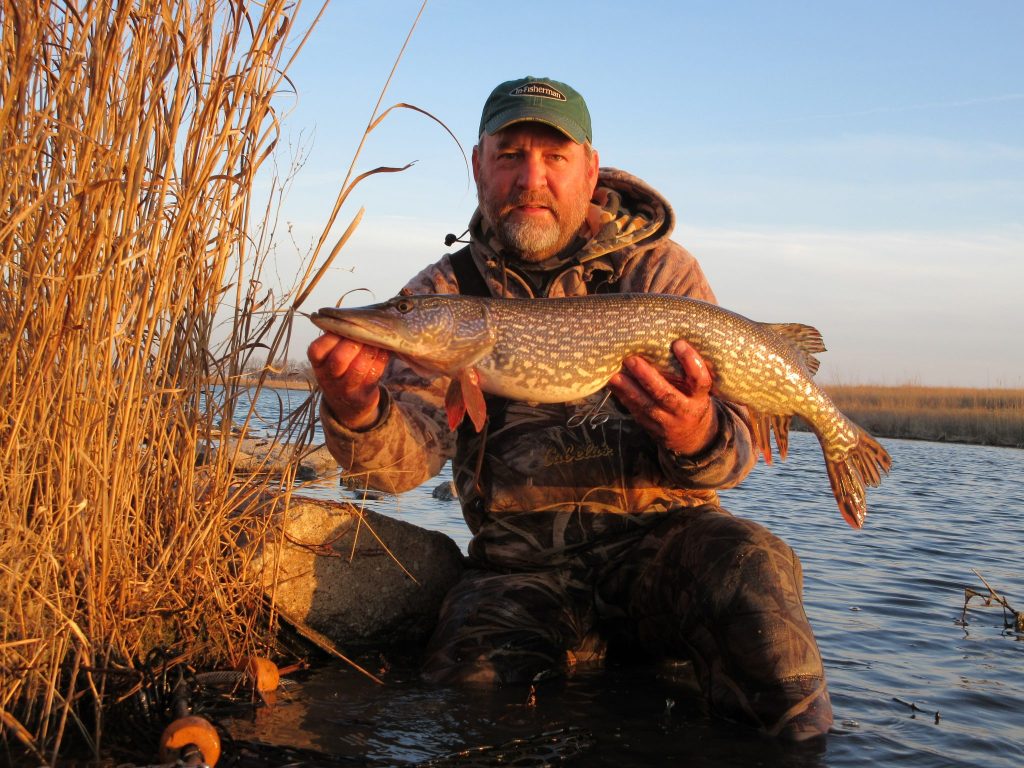
 Nebraskaland Magazine
Nebraskaland Magazine
